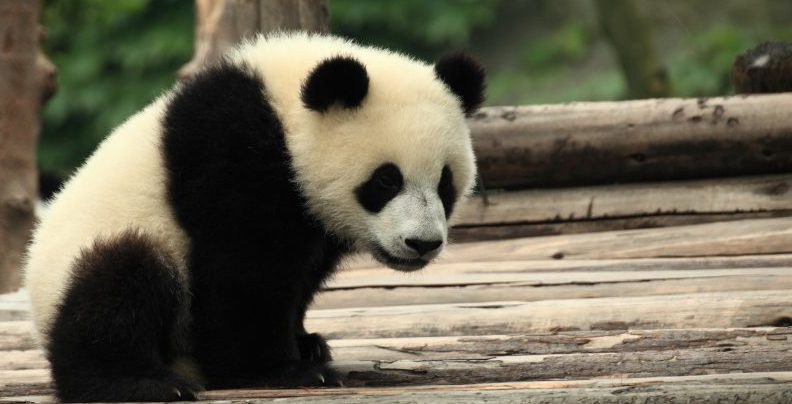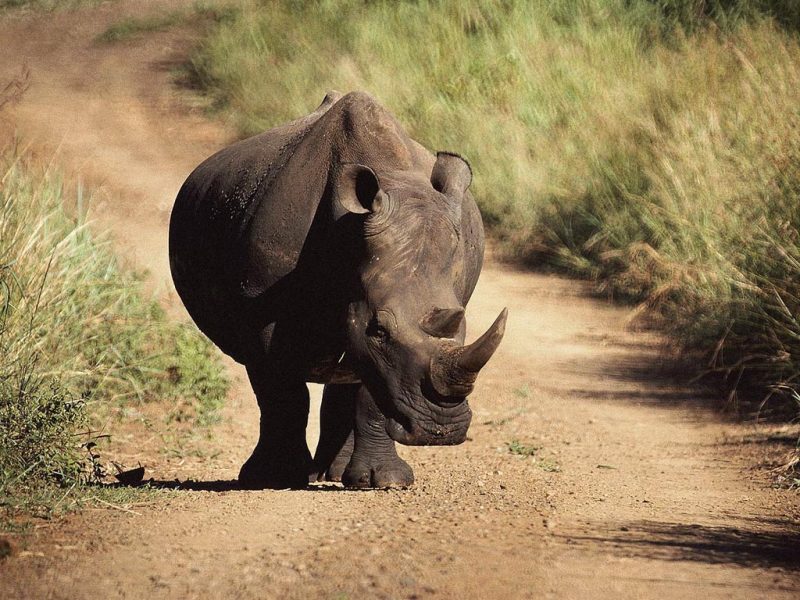It is considered that a animal species it is in danger of extinction when the number of living specimens is so low that the species could disappear completely from Earth. These disappearances may be due to indiscriminate hunting, climatic changes or the destruction of the species’ natural habitat. For instance: panda bear, Mexican gray wolf, Iberian lynx.
A emblematic case of extinction of an entire species was the one that occurred with the dodo or drone bird (Raphus cucullatus), a flightless bird from the Mauritius Islands in the Indian Ocean, whose total disappearance from the planet occurred at the end of the seventeenth century and in the hands of man, given how easy it was to hunt because the animal lacked natural predators.
There is currently a red list of animal and plant species in critical danger of extinction, integrated in 2009 by more than 3 thousand different entries. The International Union for Conservation of Nature (IUCN) is in charge of managing this list and of monitoring and promoting the preservation of these species, through proposals to penalize hunting, protect different habitats and raise awareness of the world’s population of that we are on the verge of a mass extinction of animal and plant species.
Conservation states
To classify the probability of extinction of the different animal or plant species, a scale called “conservation states” is used, which is made up of six different states, organized into three categories according to the level of risk of the species, namely:
- First category: LOW RISK. They are the species that offer the least concern in the face of extinction. It is made up of two different states:
- Least Concern (LC). The abundant species on the planet are found here, which do not offer immediate or near danger of a decrease in the number of their individuals.
- Near threatened (NT). These are animal species that do not meet the requirements to be considered in danger of extinction, but whose future suggests that they may be in the near future.
- Second category: THREATENED. Species at different levels of risk of disappearance are found here, arranged in three different states:
- Vulnerable (VU). These species meet the requirements to be considered at risk of starting the path to extinction, which means that they may not be extinct as such, but soon they will be if nothing is done. An estimated 4,309 animal species were in this category in 2008.
- Endangered (EN). Species currently becoming extinct, that is, whose number of individuals is rapidly decreasing. The survival in time of the 2448 species of animals in this category (2009) is seriously threatened if we do nothing about it.
- Critically Endangered (CR). These species are practically on the verge of extinction, so it is difficult to find living specimens. The fall in their respective populations is estimated to be 80 to 90% in the last 10 years. The list in 2008 had 1665 animal species in this category.
- Third category: EXTINGUISHERS. Species that have disappeared from our planet are found here, either permanently extinct (EX) or extinct in the wild (EW), that is, only individuals born and raised in captivity remain.
Examples of endangered animals

- Panda bear (Ailuropoda melanoleuca). Also called Giant Panda, it is a species distantly related to common bears, with characteristic black and white fur. Native to central China, there are only 1,600 individuals in the wild and 188 in captivity (2005 statistics). It is the symbol of the WWF (World Wide Fund for Nature) since 1961, as it is one of the most threatened species in the world.
- Blue finch (Fringilla polatzeki). Originally from Gran Canaria, a Spanish island off the African coast of the Sahara, it is a bluish (male) or brown (female) bird typical of the Canarian pine forests, so it is between 1000 and 1900 meters high. It is currently under threat of extinction, in fact it is one of the most threatened birds in the world, due to the reduction of its habitat as a result of indiscriminate logging.
- Mexican gray wolf (Canis lupus baileyi). This subspecies of the wolf is the smallest that exists, of the 30 that inhabit North America. Their shapes and size are similar to those of a medium-sized dog, although their habits are nocturnal. They used to make the Sonoran Desert, Chihuahua and central Mexico their habitat, but the reduction in prey led them to attack livestock and they received a brutal retaliatory hunt that led to extinction.
- Mountain gorilla (Gorilla beringei beringei). One of the two subspecies of eastern gorilla, with only two populations in the wild in the world. They were the protagonists of Dian Fossey’s studios who were portrayed in the film Gorillas in the Mist (1988), which served to publicize the dramatic state of preservation of the species, with just 900 wild individuals, due to the brutal hunting to which they have been subjected.
- Polar Bear (Ursus maritimus). Victims of climate change that melts the poles, as well as environmental pollution and indiscriminate hunting by Eskimos, these massive white bears, one of the largest carnivores in the world, are in a state of vulnerability that could soon lead them to extinction. In 2008 its total population is estimated at 20,000 to 25,000 individuals, 30% less than it was 45 years ago.
- Leatherback Turtle (Democheys coriacea). Known as the leatherback, cana, cardón, leatherback or tinglar turtle, it is the largest of all sea turtles, being able to measure 2.3 meters long and weigh about 600 kg. Inhabitant of tropical and subtropical seas, it is threatened by commercial hunting and human remodeling of the beaches that serve them for spawning, which incorporates new dangers for its eggs or for its young just hatched.
- Iberian lynx (Lynx pardinus). This carnivorous feline endemic to the Iberian Peninsula is similar to the wild cat. It is solitary and nomadic, and is at risk of extinction, in two isolated populations in Andalusia. To the common risks of the species living with contemporary man, the very specialized diet of the feline must be added, which restricts it to hunting almost exclusively rabbits.
- Bengal tiger (Panthera tigris tigris). Known as the royal bengal tiger or Indian tiger, this animal is world famous for its orange and black-striped fur, as well as its predatory ferocity and superb, imposing nature. It has been hunted enormously over the decades for its fur, despite being the national animal of countries such as India and Bangladesh, and it is considered at risk of extinction in the face of the growth of human spaces.
- Axolotl or axolotl (Ambystoma mexicanum). This species of amphibian native to Mexican lands is extremely particular, since it does not undergo a metamorphosis like the rest of the amphibians and can reach sexual maturity still having larval characteristics (gills). Its presence in Mexican culture is abundant and also for that reason it has been given enormous hunting, as food, pet or source of medicinal substances. Together with the contamination of the waters, this has led to a critical danger of extinction.
- Java Rhino (Rhinoceros probeicus). Similar to the Indian rhino, but much rarer, this Southeast Asian animal is a slightly smaller variant of the same heavy, armored animal whose horn is highly prized in traditional Chinese medicine. Due to this and the destruction of its habitat, it is in critical danger of extinction, with an estimated population of less than 100 individuals in the world.

